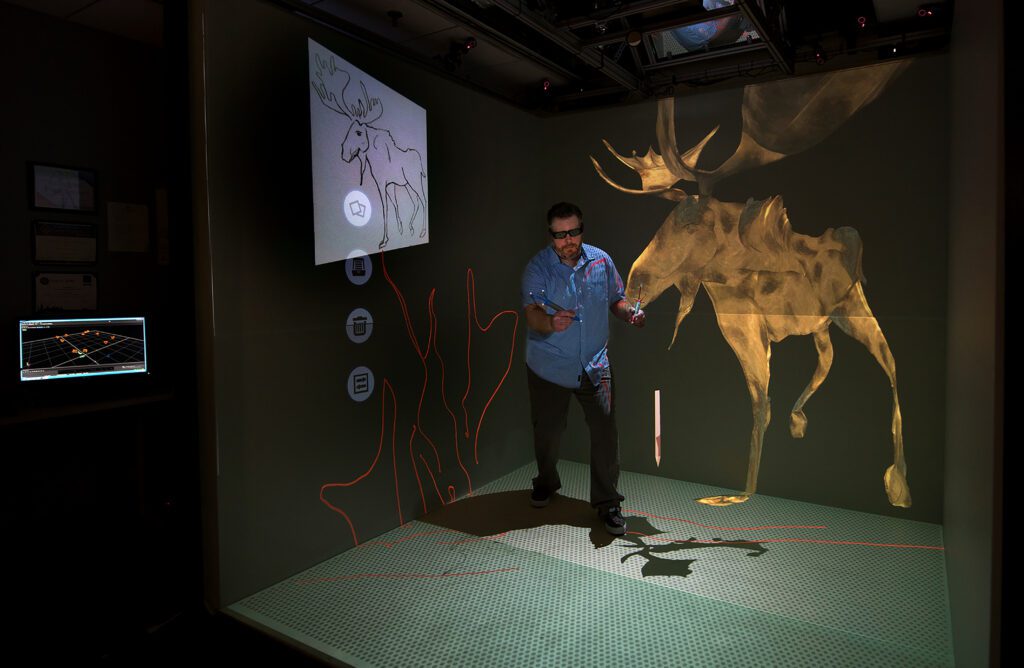Artists and animators play a crucial role in the gaming industry by bringing game characters, environments, and overall aesthetic to life. The creative process starts with the game’s concept, followed by storyboarding and concept art, which establishes the visual style, mood, and tone of the game. The 3D modeling process involves creating 3D assets, such as characters and buildings, that are textured and rigged for animation. Animators then bring the 3D models to life by creating idle animations, walk and run cycles, and attack animations. Programming, sound design, and user interface design are also crucial for developing games that are immersive and engaging. An integrated and collaborative team effort leads to the creation of complete gaming experiences.
Gaming Goes Digital: The Role of Artists and Animators in a Virtual World
Introduction
Gaming has come a long way since the days of Pong and Space Invaders. With advancements in technology, games have become more immersive and realistic, creating worlds where players can lose themselves in a virtual environment. But what goes into making these games? What role do artists and animators play in bringing these worlds to life? In this article, we will take a closer look at the role of artists and animators in the gaming industry, and how they contribute to the digital world of gaming.
The Creative Process
At the heart of any game is the creative process. Game developers must come up with a concept that is not only engaging, but also technically feasible. Once the concept has been finalized, the team will work on storyboarding and concept art to flesh out the game’s characters, environments, and overall aesthetic.
Concept Art
Concept art is a crucial stage in the creative process. This is where the game’s visual style is decided, and where the overall mood and tone of the game is established. Concept artists will work closely with the game designers to create characters, environments, and other assets that fit with the game’s vision. This artwork will then be used as reference by the 3D artists and animators as they begin to create the world of the game.
3D Modeling
Once the concept art has been finalized, the 3D modeling process can begin. This is where the artists create the 3D assets that will make up the game. These assets can include anything from characters and weapons to buildings and vehicles. The modeling process involves creating a 3D mesh of the object, which is then textured and rigged for animation.
Animation
Animation is another key part of the creative process. This is where the 3D models come to life, and the movements and actions of the characters are created. Animators will work closely with the game designers to ensure that the animations fit with the game’s style and vision. They will create idle animations, walk and run cycles, attack animations, and more. The animation process can be time-consuming, but it is crucial for immersing players in the game’s world.
The Technical Process
In addition to the creative process, there is also a technical side to game development. This includes programming, sound design, and user interface design.
Programming
Programming is the backbone of any game. It is what allows the game to run, and what makes it responsive to player input. Programmers will work with the game designers to develop the game mechanics and implement the features that players will interact with. They will also optimize the game’s performance to ensure that it runs smoothly on a variety of hardware configurations.
Sound Design
Sound design is another crucial element of game development. Sound effects and music can help to create the atmosphere of the game, and can enhance the player’s immersion in the world. Sound designers will create and implement sounds for things like footsteps, gunfire, and environmental effects like wind and rain, as well as composing music for the game’s soundtrack.
User Interface Design
The user interface (UI) is what players will interact with as they play the game. UI designers will create the game’s menus, inventory systems, and any other on-screen elements that the player will interact with. These elements must be easy to navigate and intuitive, allowing players to quickly find the information or actions they need.
Conclusion
The world of game development is a complex and collaborative one. While artists and animators play a crucial role in bringing the game’s visuals to life, they work alongside programmers, sound designers, and UI designers to create a complete experience for the player. Without the hard work and creativity of all these individuals, the immersive and engaging worlds of modern video games would not be possible.
